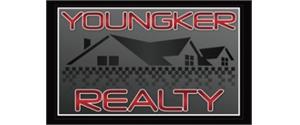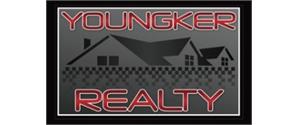Important Info
Lender
Gary Capozzoli 602-421-4300
http://www.cappymortgage.com
Electricity
Home Phone, Cable, and Internet
Qwest
http://www.qwest.com
Rental Class Change
https://mcassessor.maricopa.gov/faq/faq-rental-registration.php
Landlord/Tenant Act
https://housing.az.gov/general-public/landlord-and-tenant-act
Office of Environmental Health
Residential Pool Safety Notice
AN IMPORTANT NOTICE ABOUT POOL SAFETY
The purpose of this notice is to educate residential pool owners on the legal requirements of pool ownership and proper pool safety. Each year in Arizona, too many young children are victims of drowning or near drowning. The Arizona State Legislature recognized this threat to the health and safety of children and passed A.R.S. § 36-1681 to prevent children from gaining unsupervised access to residential swimming pools. In A.R.S. § 36-1681(E), the Legislature requires that all pool owners receive the legal requirements of pool ownership and a safety notice explaining the Arizona Department of Health Services' recommendations on pool safety.
Permission to quote from or reproduce this notice for non-commercial purposes is granted when due acknowledgement is made. Quotation from or reproduction of this notice for a commercial purpose is governed by A.R.S. § 39-121.03.
POOL ENCLOSURE REQUIREMENTS
A.R.S. § 36-1681 requires that all residential swimming pools be protected by an enclosure (wall, fence, or barrier) that surrounds the pool area. Unless a local code** provides otherwise, the enclosure of a belowground or aboveground pool must:
- Entirely enclose the pool area;
- Be at least 5 feet high;
- Have no openings other then doors or gates, through which an object 4 inches in
diameter can pass;
- Have no openings, handholds, or footholds accessible from the exterior side that can
be used to climb the barrier; and
- Be at least 20 inches from the water's edge.
If, however, a residence or living area makes up part of the enclosure required by A.R.S. § 36-1681(B), there must be:
- A wall, fence, or barrier located between the swimming pool or other contained body
of water and the residence or living area that:
- Has a height of at least four feet;
- Has no openings through which a spherical object four inches in diameter can
pass;
- Has a gate that opens outward from the pool and is self-closing and self-
latching;
- Has no openings, handholds, or footholds accessible from the exterior side of the
enclosure that can be used to climb the wall, fence, or barrier; and
- Is at a distance of at least twenty inches from the water’s edge;
- A motorized safety pool cover that requires a key switch and meets the American
Society of Testing and Materials (ASTM) standards in F1346-91 (www.astm.org);
- For each door or window in the residence or living area that has direct access to the
pool:
- A self-latching device that is located not less then fifty-four inches above the floor; and
- Either a screwed in wire mesh screen covering a dwelling or guest room window
or a keyed lock that prevents a dwelling or guest room window from opening
more then four inches; or
- For an aboveground swimming pool, non-climbable exterior sides which are a
minimum height of four feet and access ladders or steps that are removable and able
to be secured when the pool is not in use.
GATE REQUIREMENTS
According to A.R.S. § 36-1681(B)(3), any gate in either the five-foot-tall wall, fence, or
barrier enclosing a pool or the four-foot-tall wall, fence, or barrier between the residence or
other living area and a pool must:
- Open outward from the pool
- Be self-closing and self-latching; and
- Have a latch:
- Located at least fifty-four inches above the underlying ground;
- Located on the pool side of the gate with the latch’s release mechanism located
at least five inches below the top of the gate and no opening greater than one-
half inch with twenty-four inches of the release mechanism; or
- Located at any height if secured by a padlock or similar device which requires a
key, electric opening, or integral combination.
ARIZONA DEPARTMENT OF HEALTH SERVICES POOL SAFETY RECOMMENDATIONS
- Never leave a child unattended in the pool or pool area.
- Because flotation devices and swimming lessons are not substitutes for supervision, a
child should always be watched when in or around the pool area.
- CPR/CCR instructions and the 911 emergency number (or local emergency number)
should be posted in the pool area.
- A phone should be located in the pool area or easily accessible in case of an
emergency.
- All residential pool owners should attend water rescue and CPR/CCR classes.
Lifesaving equipment should be easily accessible and stored n the pool area.
- All gate locks and latches should be checked regularly to insure they are working
properly.
- A gate should never be left propped open.
- All items that could be used to climb a pool barrier should be removed from around
the barrier.
- In an emergency:
- Shout for help;
- Pull the child from the water;
- Call 911 (or local emergency number) for help; and
- After checking the child’s airway and breathing, immediately begin CPR/CCR if
necessary.
* "Pool" means an in-ground or aboveground swimming pool or other contained body of water 18 or more inches in depth,
wider than 8 feet at any point, and intend for swimming, pursuant to A.R.S. § 36-1681(A).
** Phoenix, Peoria, Tucson, and some other cities and unincorporated areas of Maricopa, Pima, Pinal, and other counties
have different pool barrier requirements. Check with your local city and county governments to see if they have adopted
different pool barrier requirements.
ADHS Web Privacy Policy. This page last modified on March 07, 2008.
Copyright 2008 Arizona Department of Health Services. All rights reserved.
General comments, questions, or concerns: ADHS Webmaster
Page 2 of 2
ADHS Office of Administrative Rules - Residential Pool Safety Notice
8/14/2008
http://www.azdhs.gov/phs/oeh/pool_rules.htm

